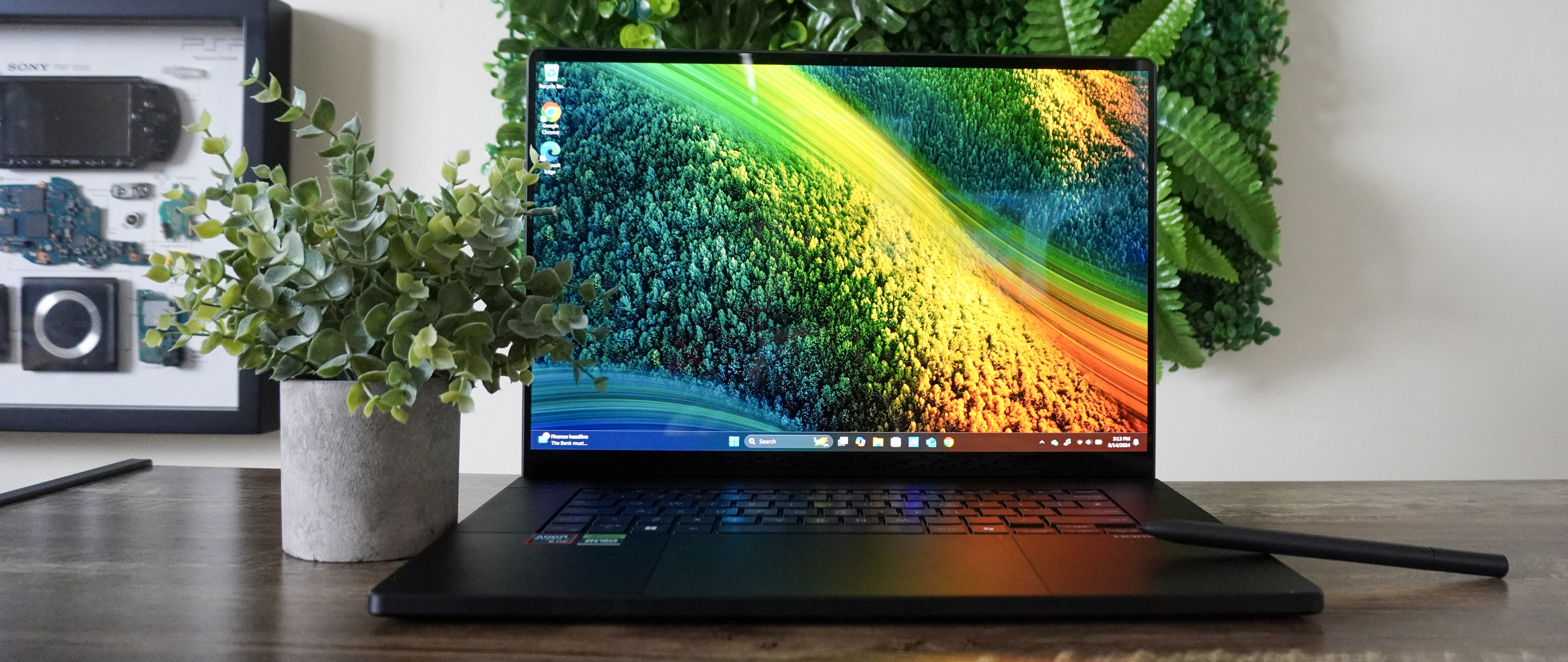Tom's Guide Verdict
The Asus ProArt P16 is a 4K OLED masterpiece of a laptop with immense horsepower to crush any intense creative task you throw at it. That AMD Ryzen AI 9/RTX 4070 combination soars in our performance testing, while offering a surprisingly long battery life. Pair that with a solid utilitarian aesthetic and creatively-inspired ergonomics like the built-in touch dial, and this puts the MacBook Pro on notice for prosumers.
Pros
- +
Sleek utilitarian aesthetic
- +
Mouthwatering 4K OLED display
- +
Impressive performance
- +
Great keyboard and touchpad
- +
Surprisingly strong battery life in most cases
Cons
- -
But stamina does fall under pressure
- -
4K display only 60Hz
- -
SSD speeds are a let down
- -
Buy headphones - fans can get loud
Why you can trust Tom's Guide
The Asus ProArt P16 is a certified banger — a utilitarian beast of a gorgeous laptop that is packed with a eye-meltingly spectacular 4K OLED panel, and a mighty power pairing of the new AMD Ryzen AI 9 HX 370 chipset and RTX 4070 graphics.
Combine all of this with a legitimately useful software suite, a built-in DialPad that allows for impressive precision in creative apps (alongside being able to control key functions like volume and brightness), and you’ve got a monster of blistering creative performance.
And speaking of that suite, a lot of these tools are infused with AI. But don’t get me wrong, these aren’t just gimmicks. From brainstorming and conceptualizing an idea with MuseTree (basically a more advanced version of Paint’s CoCreator with an ideas tree thrown in there) to intelligently collating your photos and videos into one app categorized intelligently with AI, the P16’s app selection gets out of the way of you expressing your creativity.
It’s not perfect, don’t get me wrong: Without any discrete GPU options above RTX 4070, this will limit its creative potential; under heavy loads, the fans kick up a storm; the display is locked at game-limiting 60Hz; and the SSD loading speeds are a little on the slow side.
But when you’re thinking about picking up an all-in-one creator laptop that can keep up with whatever you throw at it, from photography and videography to music creation and advanced AI production, this is the MVP — even when compared to the current champ in the MacBook Pro.
That puts the ProArt P16 in prime position as one of the best AI laptops you can buy, one of the best laptops for video editing, and even one of the best laptops overall!
Asus ProArt P16: Cheat Sheet
- What is it? This is an AI-infused creator laptop.
- Who is it for? This is for what we call prosumers — power users who get mightily creative with the likes of Adobe Creative Suite and other advanced apps.
- What does it cost? You can get it with an RTX 4060 for the base price of $1,899, but we’d recommend going for the more advanced spec with RTX 4070 for $2,299.
- What do we like? After a seemingly mediocre outpouring of 16-inch ProArt laptops, Asus has created an absolute beast. The new AMD chip is an absolute screamer when paired with RTX 4070 and a ton of RAM, and that 4K touchscreen panel is perfect for creativity.
- What don’t we like? It’s a 16-inch 4K laptop, so while the battery life is better than expected for casual use, it does run down fast under more pressure. On top of that, the panel is just 60Hz, and that SSD is kind of slow for loading dense content.
Asus ProArt P16: Specs
Spec | Asus ProArt P16 |
|---|---|
Price | From $1,899 |
CPU | AMD Ryzen AI 9 HX 370 |
GPU | Up to RTX 4070 |
RAM | Up to 64GB LPDDR5X |
Storage | Up to 2TB |
Display | 16-inch 4K OLED touchscreen, 60Hz |
Battery | 90 WHrs |
Ports | 1x HDMI 2.1, 2x USB-A 3.2m 1x USB-C 3.2, 1x USB-C 4 |
Dimensions | 13.9 x 9.7 x 0.7 inches |
Weight | 4.1 pounds |
Asus ProArt P16: What we like
Upon holding this in my hands, turning it on and getting to work, I quickly realized I was using something special here in the Asus ProArt P16.
Get instant access to breaking news, the hottest reviews, great deals and helpful tips.
Unlimited power
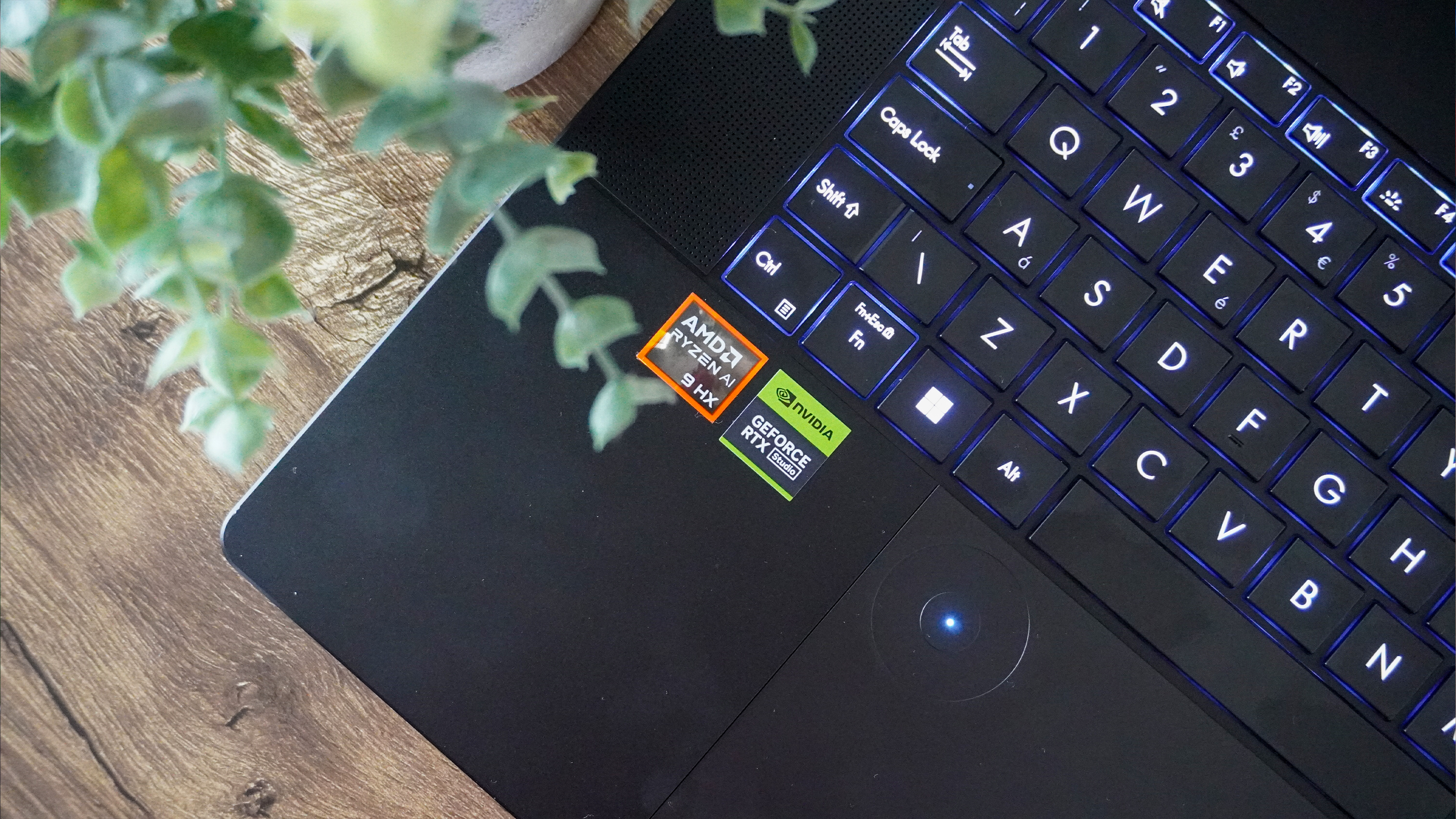
You may remember my Asus Zenbook S 16 review — my first interaction with the new AMD Ryzen AI 9 HX 370 CPU. This is the first of the x86 family to jump into the Copilot+ PC pool, and when compared to the Arm capabilities of Snapdragon X Elite, it was a simple case of “close, but no cigar.”
Put simply, this was because of the reduced wattage going to the chip, to give this 16-inch thin and light more of a shot at getting good battery life. But what would happen if we were to turn up the power going to these internals, and more importantly, what would happen if we attached a dedicated GPU in the RTX 4070 to it? In one word: magic.
Laptop | Geekbench 6.3 multicore | Photoshop Pugetbench | Handbrake (transcoding 4k video to 1080p mm:ss) |
|---|---|---|---|
Asus ProArt P16 | 15343 | 8295 | 03:20 |
M3 Pro MacBook Pro | 14081 | 1120 | 04:26 |
M3 Max MacBook Pro | 21182 | 1357 | 02:36 |
In the realm of creator laptops, these numbers are mightily impressive in the Windows space — especially when you take into account that price tag for it. And when compared to its ultimate foe in the MacBook Pro, they handily annihilate the multi-core processing and graphical potential of the M3 Pro and M3 Max (thanks to that GPU).
Sure, the M3 Max does eke ahead here in terms of creative tasks as a whole, but for a far more reasonable price, the ProArt P16 gives you more than enough raw horsepower for your creatively intense workloads — be it a complex 4K video edit in Premiere Pro or a 50+ track composition in Ableton Live.
Oh, and since this is a Windows laptop with a dedicated GPU, it can do something no MacBook can even dream of doing — run AAA games really to a level that makes even top tier gaming laptops sweat. It's a shame you can't see those frame rates translate on a 60Hz display, but this is a nice to have nonetheless.
Laptop | 3DMark Fire Strike | Shadow of The Tomb Raider (1080p) |
|---|---|---|
Asus ProArt P16 (AMD Ryzen AI 9 HX 370 + RTX 4070) | 24284 | 102 FPS |
Asus ROG Zephyrus G16 (Intel Core Ultra 9 185H + RTX 4070) | 22681 | 94 FPS |
Alienware x16 R2 (Intel Core Ultra 9 185H + RTX 4080) | 30921 | 117 FPS |
Uninterrupted creativity
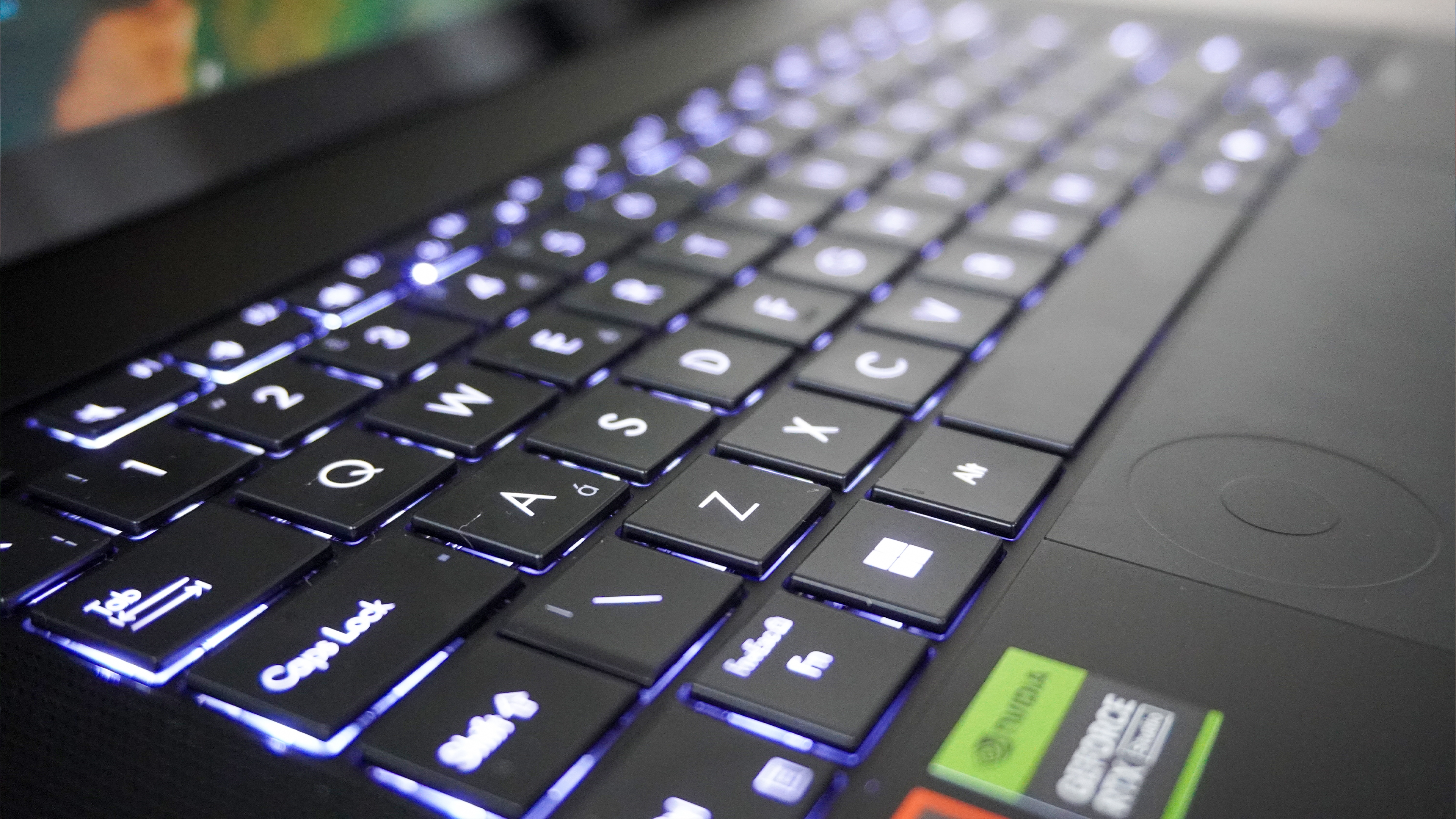
So now we know how performant this system is, let’s get into how you can harness it. Ergonomically, a creator laptop’s hardware needs to get out of the way and be your canvas, on which the ProArt P16 absolutely delivers.
For those day-to-day tasks, you’ve got a fantastic keyboard and gigantic touchpad — a dynamic duo of productivity with keys that have that tasty tactility that Asus is known for and a smooth mouse surface to glide your cursor across. And since this is ProArt, you’ll get the added benefit of a DialPad to really (pardon the pun) dial into any creative work.
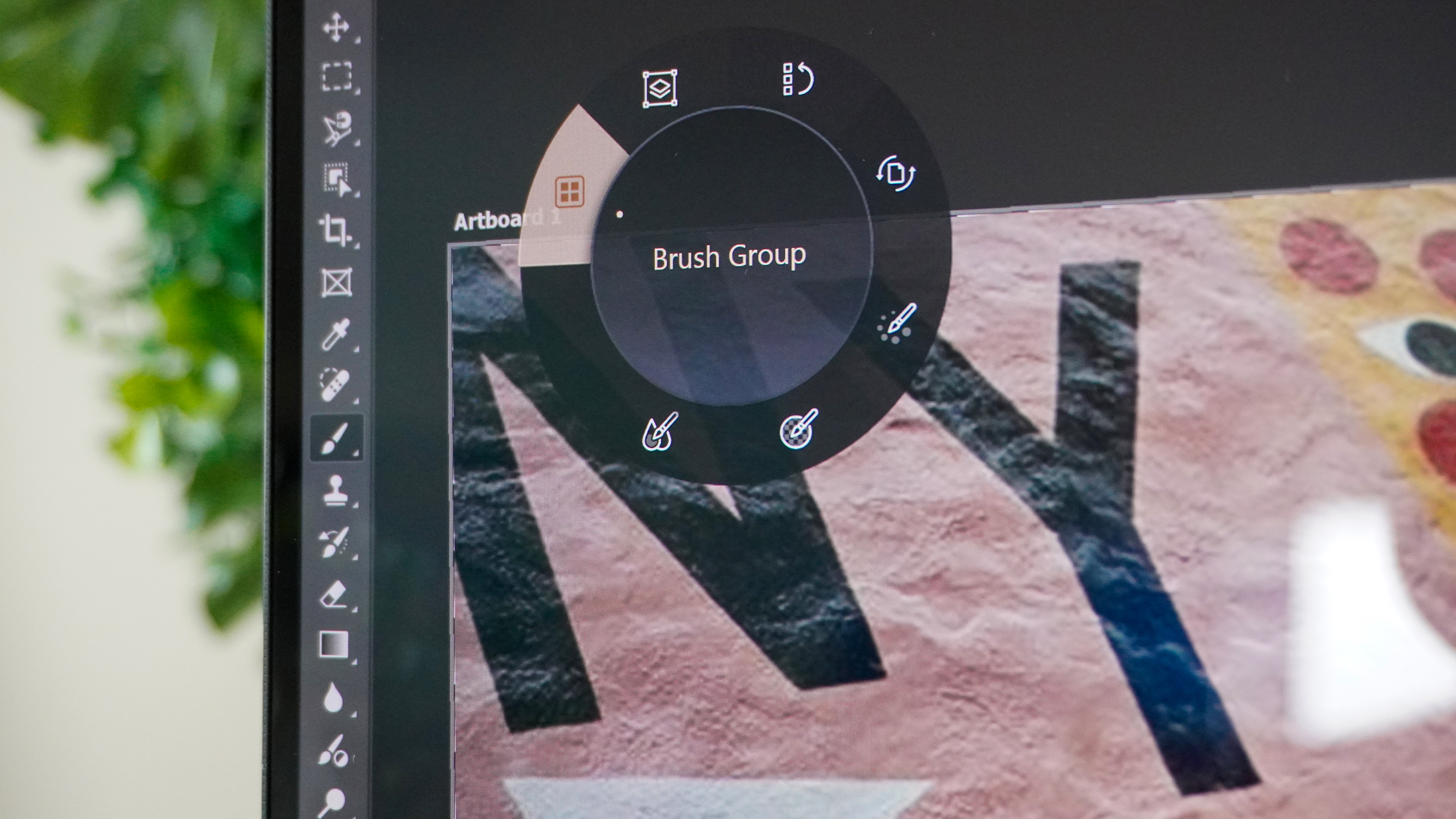
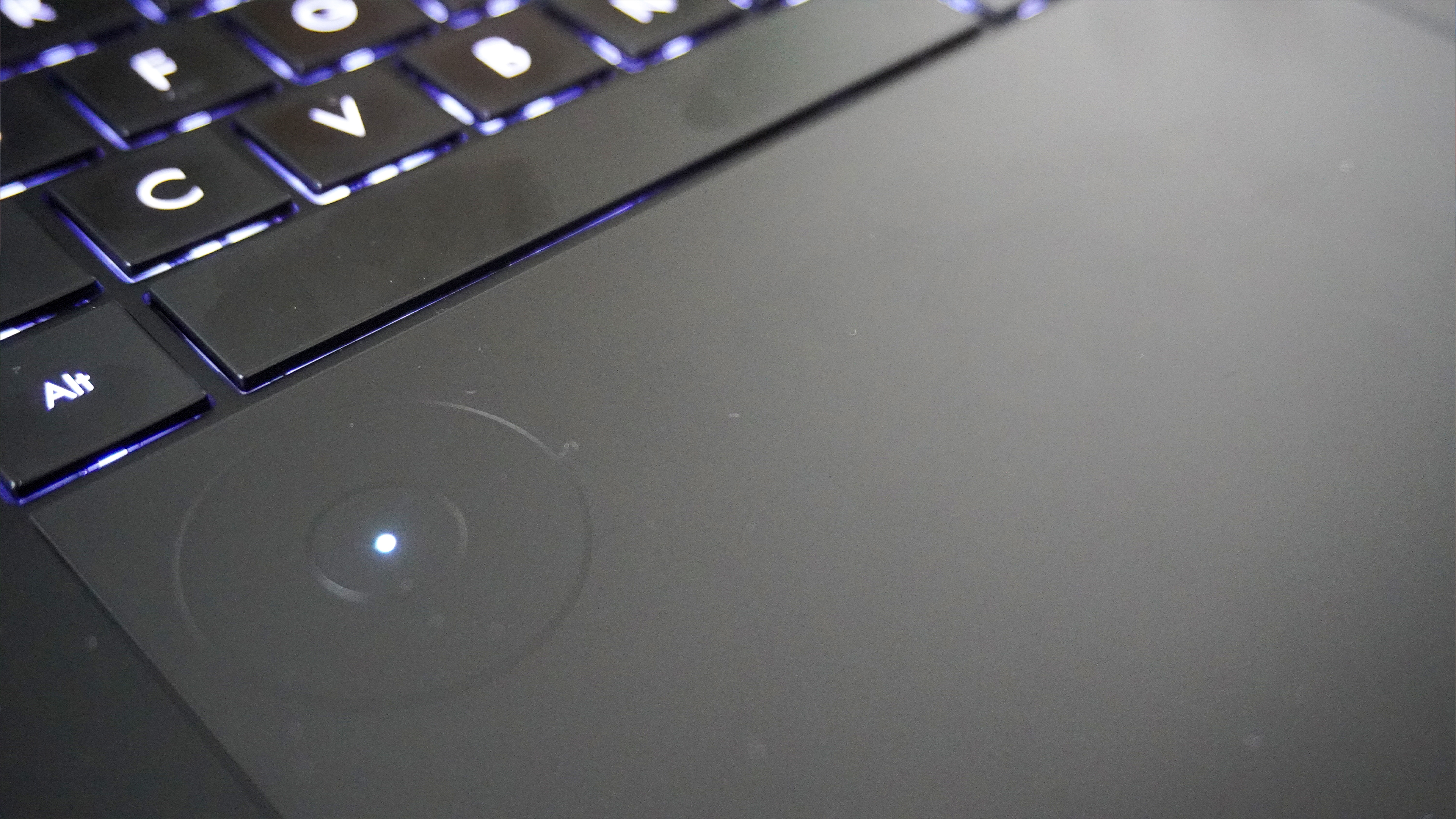
If you don’t know what I’m talking about, the DialPad is what happens when a laptop gets busy with an iPod click wheel — a multi-function touch-sensitive jog wheel that enables you to control functions across a whole host of apps.
Whether its system functions like adjusting the volume, scrubbing through a YouTube video on Chrome, or adjusting the play speed of a clip in CapCut, this can do it all, as well as be a nice little shortcut to advanced functions in Adobe Creative Suite.
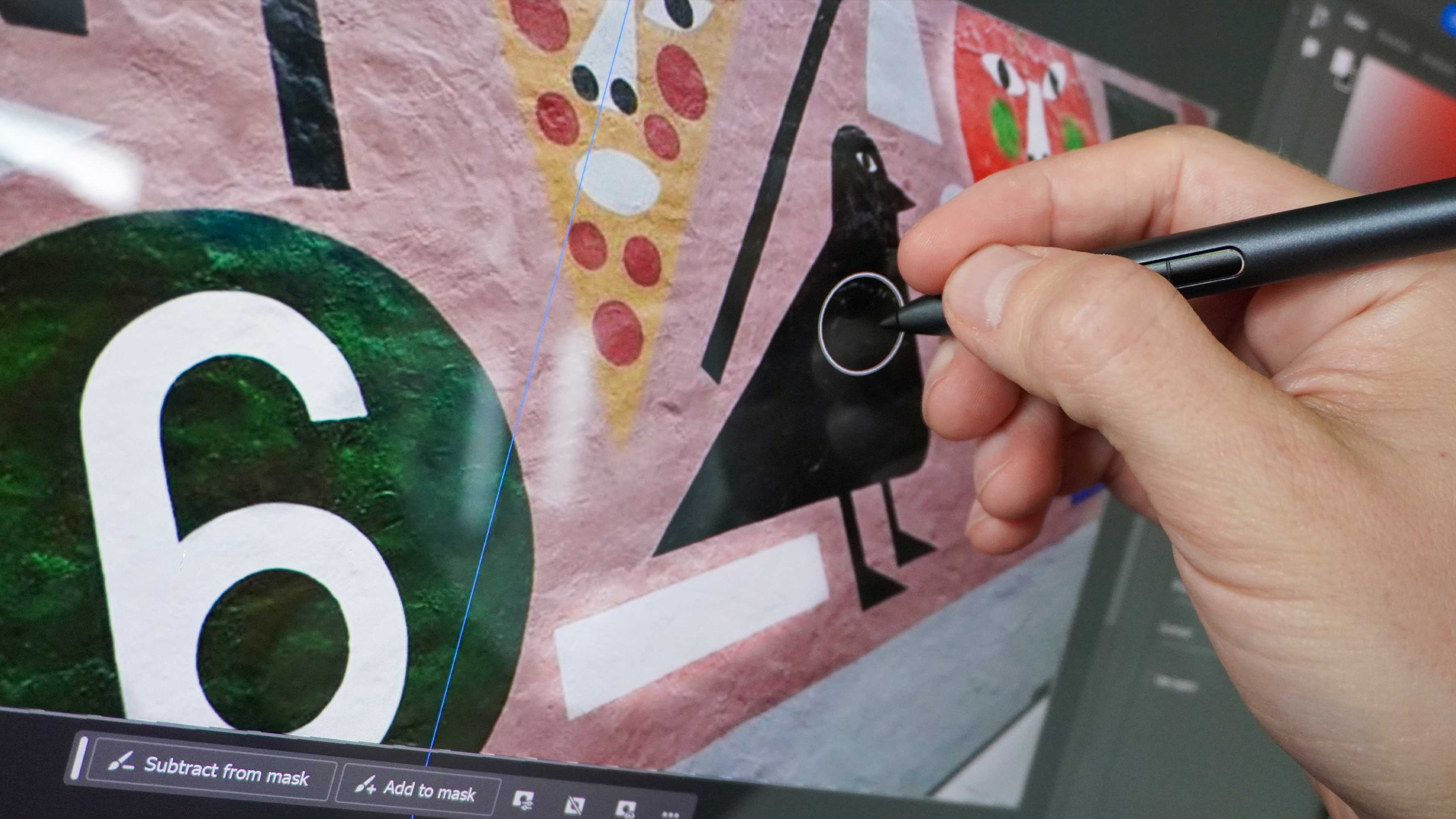
Now, it’s not a perfect solution. When drawing with a pen tool on Photoshop for example, I’d love to be able to adjust the thickness and opacity of the pen in real-time, as to get a truer fade out — with this, you can only go so far as to draw a little, spin that dial a little, and repeat.
But as far as it being a way to eliminate any possible distractions to your creative flow, Asus has been iterating quietly on this and it’s now quite a lovely inclusion.
Laptop | Average brightness (nits) | sRGB color gamut (%) |
|---|---|---|
Asus ProArt P16 | 356 | 120.8 |
M3 Max MacBook Pro | 559.8 | 115.5 |
And speaking of the pen tool, we’ve got to talk about the (frankly) mind blowing display. This is a 4K OLED panel with a productivity-friendly 16:10 aspect ratio. It may only run at 60Hz (sorry, pro gamers), and the brightness is a little on the lower end when compared to the Mini LED of MacBooks.
But for creating, this super sharp, super vivid screen is a feast for the eyes — especially with its super low latency touch response.
With color accuracy that inspires confidence (which you can calibrate in the ProArt app) and a supreme crispness, this is an absolute joy to work on. Pair that with a strong set of speakers with impressive clarity in the highs and good bass production, and you’ve also got one of the best binge watching experiences I’ve had on a laptop.
Copying the ROG Zephyrus G16’s homework (in a good way)
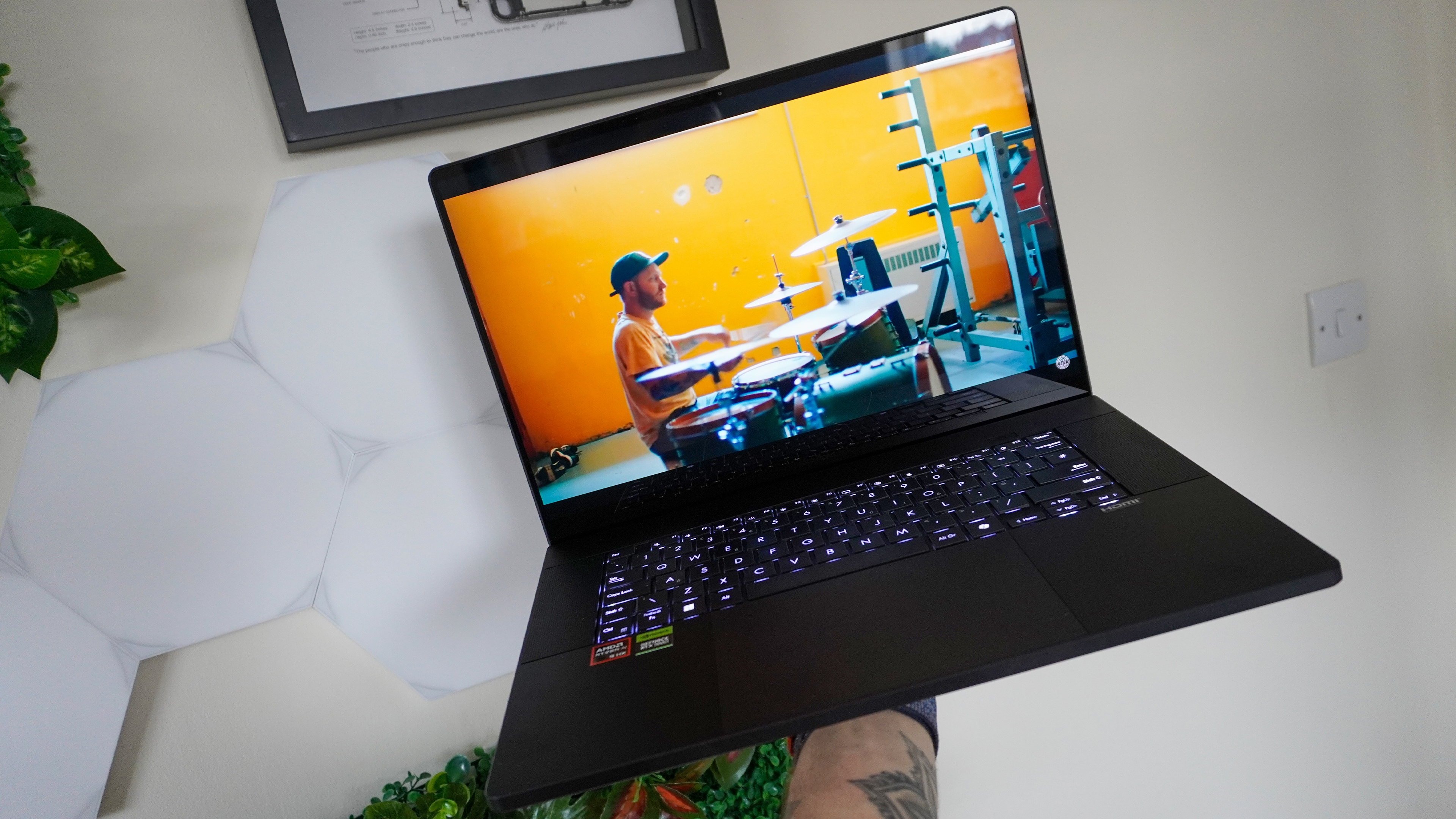
If you’re looking at this utilitarian aluminum body and thinking “this looks familiar,” you’re not alone. This is a very similar chassis you get to the gaming alternative – the Asus ROG Zephyrus G16. But in the ProArt P16, you’re getting something that leaves a far more classier, luxurious footprint atop your desk.
Laptop | Dimensions | Weight |
|---|---|---|
Asus ProArt P16 | 13.9 x 9.7 x 0.7 inches | 4.1 pounds |
M3 Max MacBook Pro | 14.0 x 9.7 x 0.6 inches | 4.8 pounds |
Gone is that silver or dark grey finish with the slash lighting across the top, and in its place is a delicious matte black finish that is impressively fingerprint resistant and a subtle pop of branding color in the bottom color. That gamer font on the keycaps is replaced by a far cleaner typography that is far easier to see when using the backlighting.
From the machined edges that eliminate any digging into your wrists when typing, to that thin, light, metallic body that inspires confidence in its durability, this aesthetic has just pipped the Huawei MateBook X Pro (in my eyes) as the best-looking laptop out there.
Asus ProArt P16: What I don't like
No laptop can be perfect, and there are a couple of the usual suspects you need to know about in the ProArt P16.
Fans can take you out of your flow
The x86 way of handling tasks is something that’s been around for over three decades. No matter how much you work on the thermal management of a chip (and AMD has done wonders with the Ryzen AI 9), it’s still not the most efficient way of tackling them.
And when you put a GPU in there and turn the Thermal Design Power up to anywhere between 60 and 80W, the fans will need to kick in to combat it. Fortunately, AMD has cracked the code on keeping temperatures nice and low for casual productivity, as you can see below.
Laptop | Touchpad temperature (Fahrenheit) | Hottest point temperature (Fahrenheit) |
|---|---|---|
Asus ProArt P16 | 73.8 degrees | 87.6 degrees (center underside) |
M3 Max MacBook Pro | 75.5 degrees | 82 degrees (center underside) |
But the end result of putting the ProArt P16 under pressure is exactly what you’d expect from the x86 family — a small jet engine trying to take off at worst, and a somewhat distracting hum at best. Make sure you invest in a good pair of headphones to keep yourself immersed in your work.
SSD speeds are a letdown
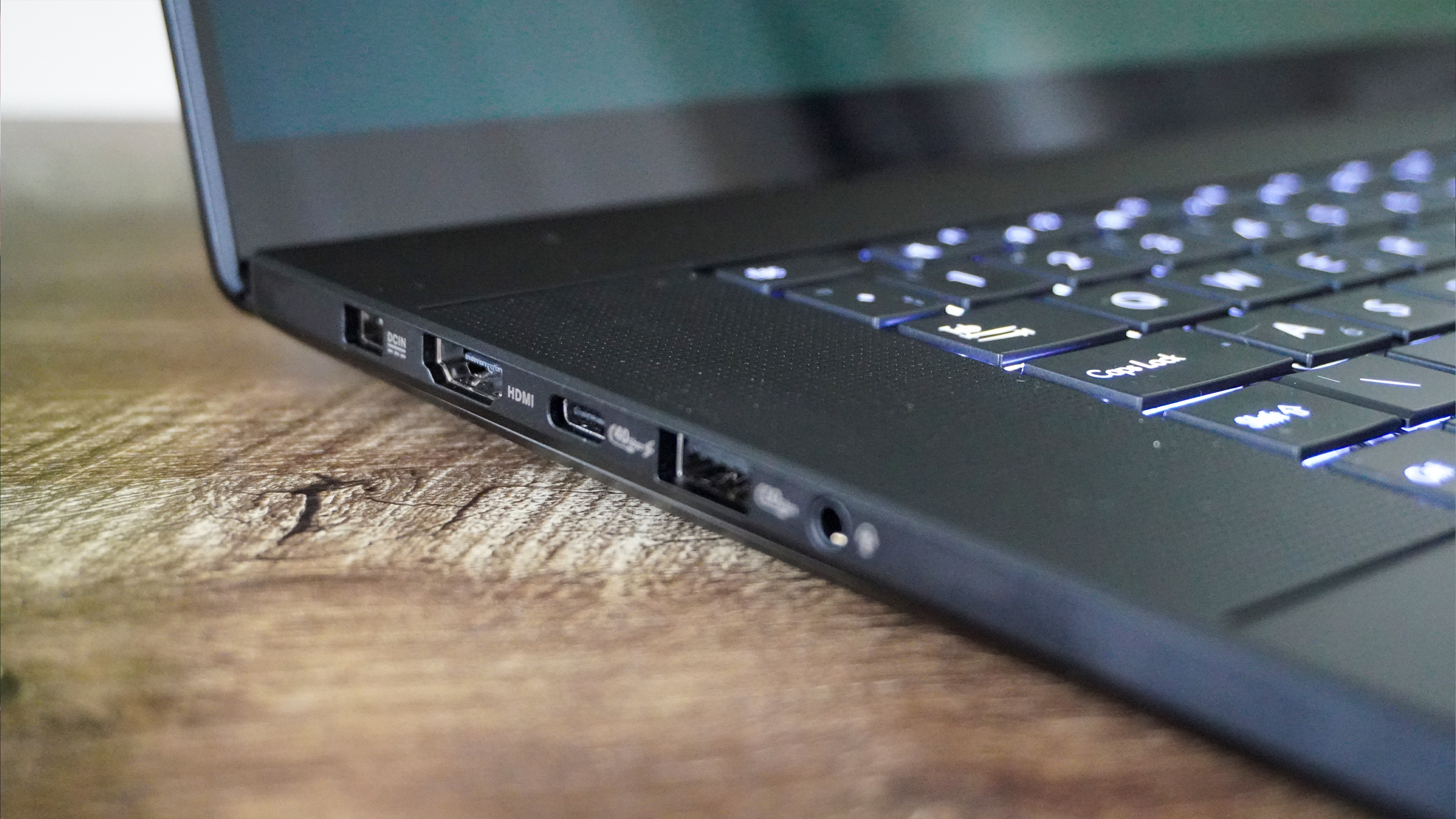
Asus just hasn’t seemed to be able to get this part right. Either it’s slower internals and a lightning fast SSD, or a beasty CPU/GPU combo and a drive loading time that doesn’t quite show up to the party.
The ProArt P16 is in the latter of these two categories, and while it’s not to the point that you’ll be shaking your fist with outrage, the speed of transferring files is noticeably slower to its closest kin.
Laptop | Blackmagic Disk speed test (write) | Blackmagic Disk speed test (read) |
|---|---|---|
Asus ProArt P16 | 2834.8 MBps | 3214.2 MBps |
M3 Pro MacBook Pro | 4211.5 MBps | 5069.6 MBps |
M3 Max MacBook Pro | 6272.5 MBps | 5039.7 MBps |
In those clutch moments where you’ve got a massive 50GB+ video edit that needs to be transferred in a flash, this did prove problematic for me. My only advice would be to make sure you make time for those all-important file transfers before you head off somewhere. Don’t leave it until the last minute.
Not quite the stamina king
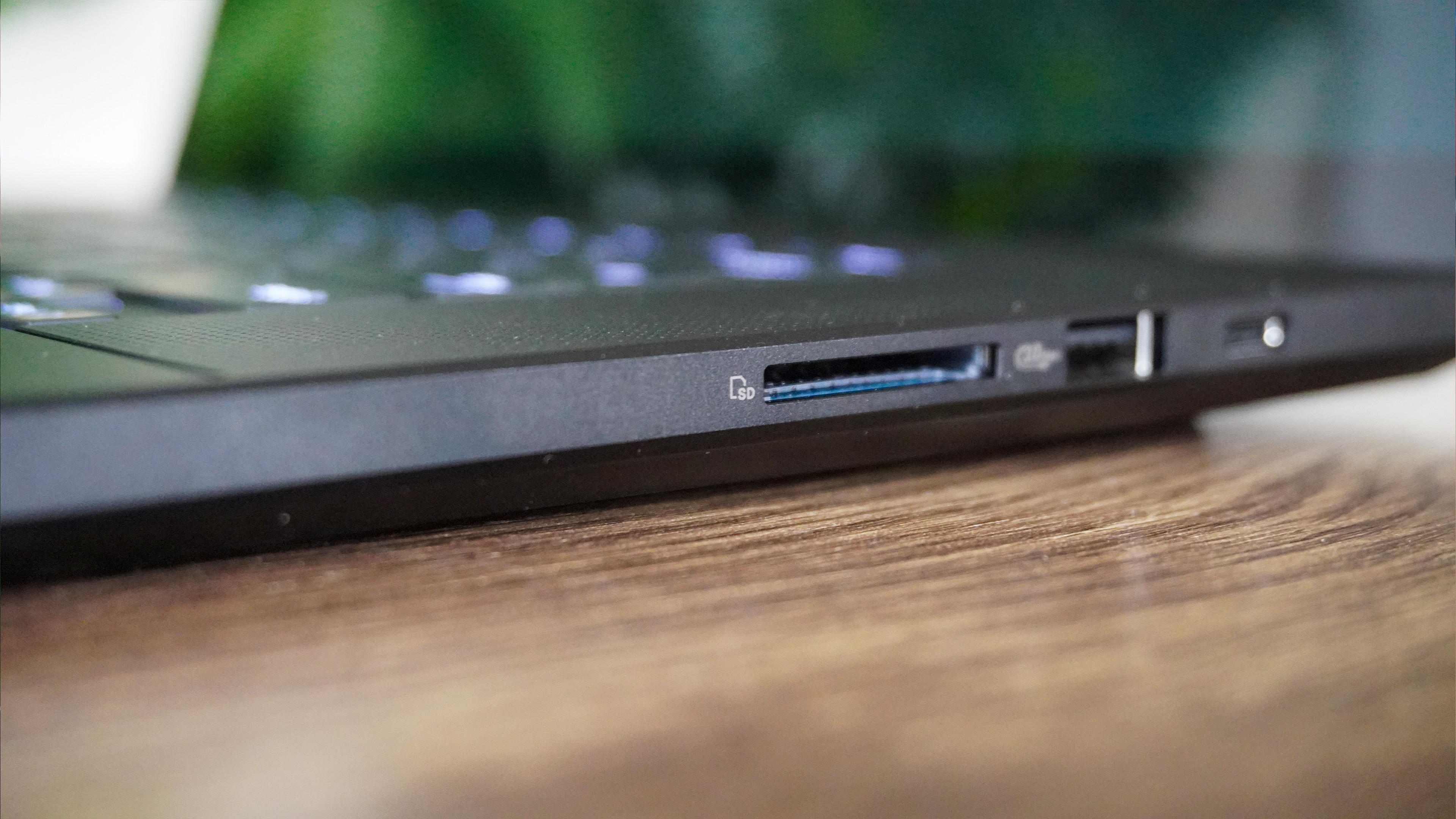
Three things are certain in this life: death, taxes and the MacBook Pro having incredible battery life. The competition is starting to catch up, but remember what I said about the x86 efficiency issues? That’s still the case here.
Don’t get it twisted — when it comes to similar competition in this architecture like Intel laptops, AMD has done some wizardry in longevity. But we’re in a different world when it comes to Windows machines, so to adjust our expectations accordingly, this doesn’t quite cut the mustard.
Laptop | Web surfing battery life (hh:mm) |
|---|---|
Asus ProArt P16 (AMD Ryzen AI 9 HX 370) | 09:32 |
16-inch MacBook Pro (M3 Max) | 18:12 |
Asus ROG Zephyrus G16 (Intel Core Ultra 9 185H) | 06:08 |
For those days of casual productivity, including several quick forays into Photoshop, 15 Chrome tabs and Spotify playing in the background, I did manage to get from 9am to 5pm with about 10% to spare. But if you have anything more intense planned, such as editing work in Premiere Pro, you can see that 90Whr battery drain in a little under four hours.
To give you context here, my M3 Pro MacBook Pro (14-inch) running the same app can last for well over six hours. Make sure you keep that charger with you.
How does the Asus ProArt P16 compare to the M4 MacBook Pro?
The Asus ProArt P16 was a creative summer hit, but it launched just a few weeks before Apple’s M4 MacBook Pro and M4 Pro MacBook Pro took center stage. How do these machines compare, and which one gives you the best bang for your buck? Let’s get into it.
And while we know some things haven’t changed — the design remains identical and Asus maintains its display dominance with the P16’s 4K OLED display vs Apple’s mini LED. But a lot has changed under the hood, so let’s focus on what’s important here.
Raw performance
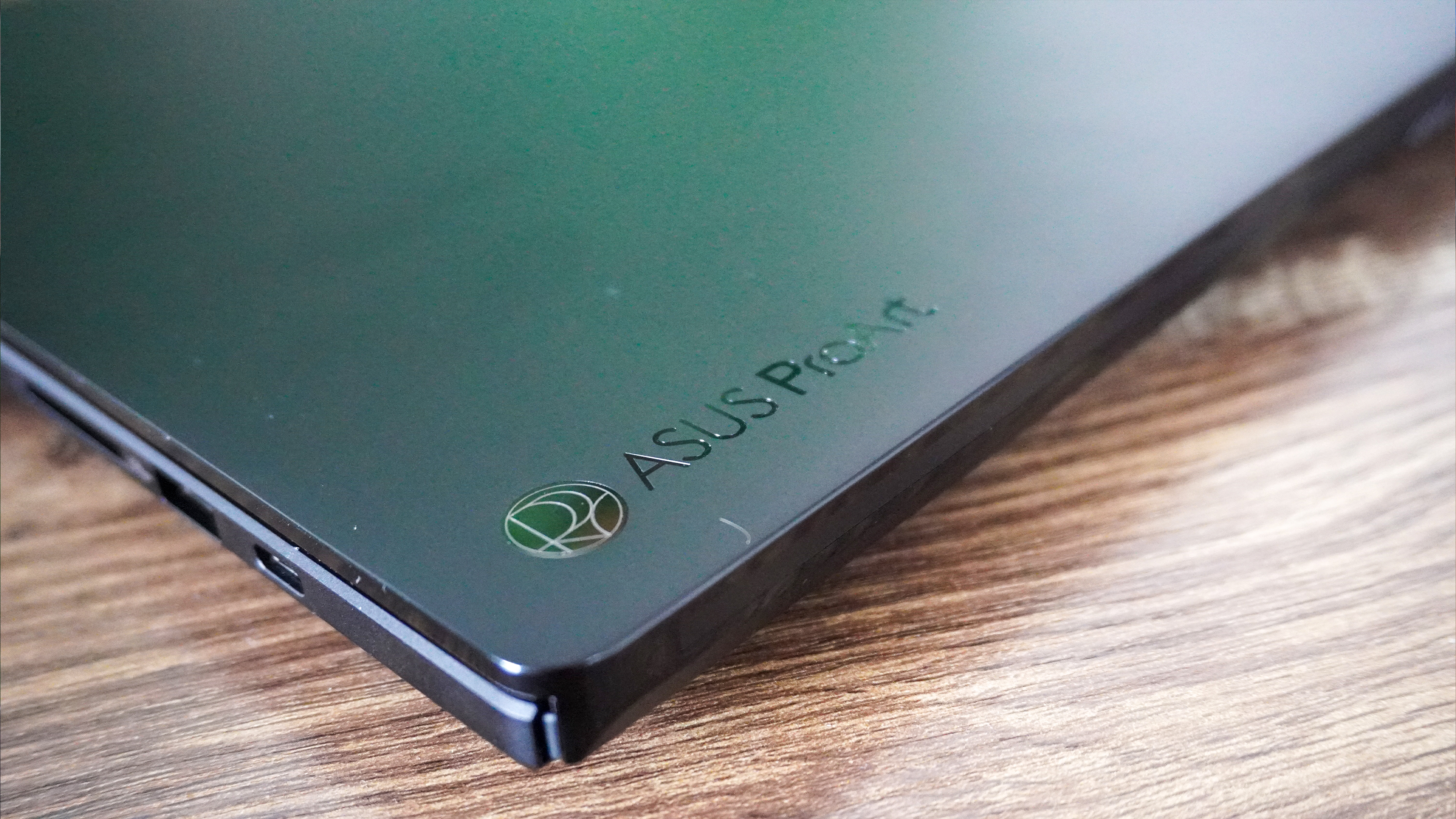
The evolution of M4 is not so much about upping that multi-core speed (which it does), but rather in the serious speed boost to single-core, which makes macOS feel impressively zippy — taking another leap ahead of the ProArt P16.
But of course, multi-core matters for those parallel tasks of creative work like video rendering and graphics animation. The standard M4 is basically neck-and-neck, while the M4 Pro just steams ahead at the similar cost to the ProArt P16.
Laptop | Geekbench 6 single-core | Geekbench 6 multi-core |
|---|---|---|
Asus ProArt P16 (AMD Ryzen AI 9 HX 370) | 2872 | 15286 |
M4 MacBook Pro | 3807 | 15114 |
M4 Pro MacBook Pro | 3910 | 22822 |
But the testing that matters here is on the PugetBench side of things. How does that new M4 silicon handle the joint work of CPU and GPU for apps like Premiere Pro and Photoshop? Well, it should come as no surprise that the answer is “easily.”
Laptop | PugetBench Photoshop score | PugetBench Premiere Pro score |
|---|---|---|
Asus ProArt P16 (AMD Ryzen AI 9 HX 370) | 8279 | 8908 |
M4 MacBook Pro | 10542 | 4618 |
M4 Pro MacBook Pro | 12292 | 8888 |
While that dedicated GPU is always going to beat out integrated graphics (especially in video editing), the cores on M4 is hyper-optimized to excel at these tasks to a point where it can beat the 4070 in some tasks.
Longevity guaranteed
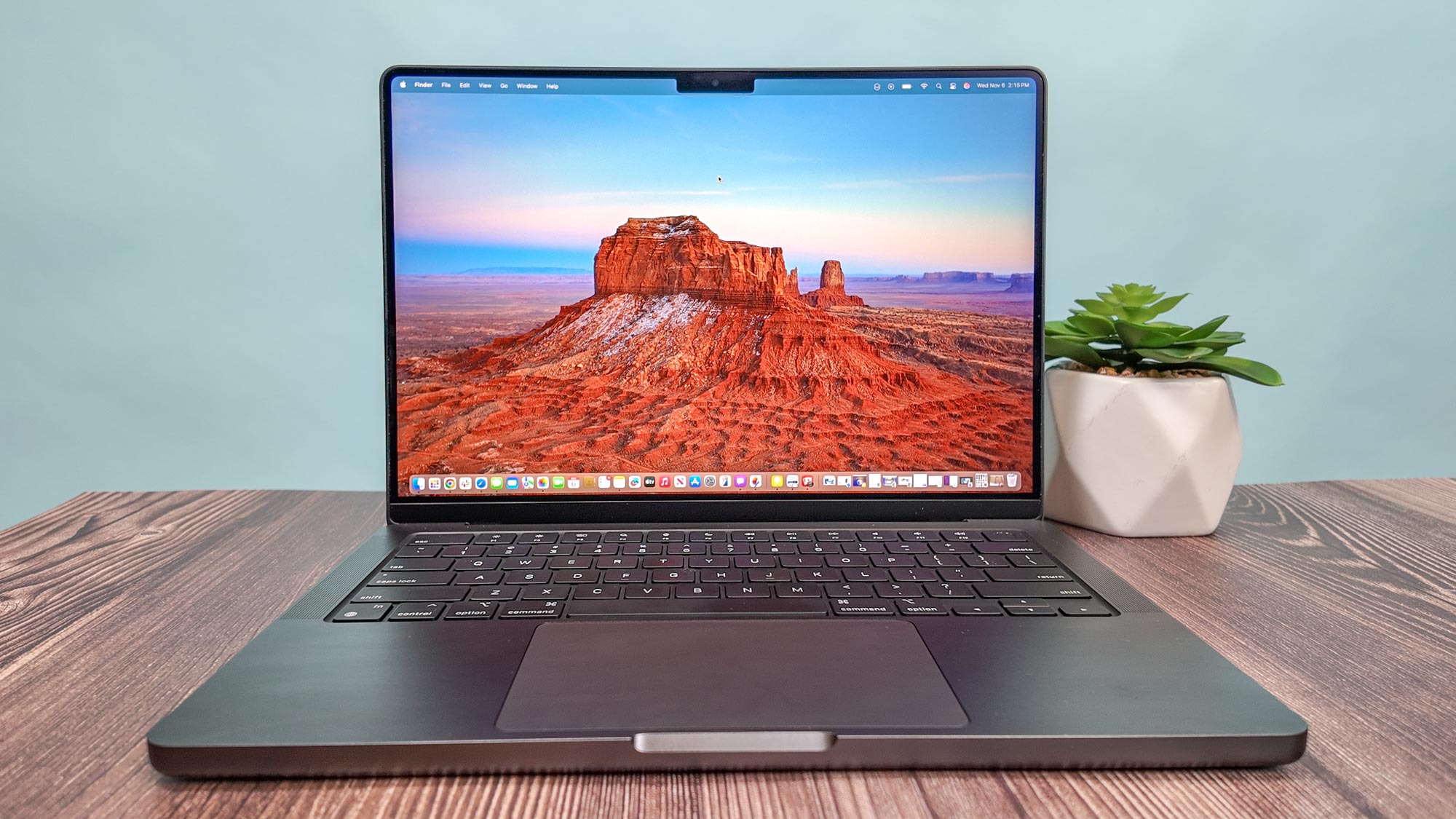
I don’t need to spend too much time on this. Apple Silicon has always been known as the stamina champ. The Asus ProArt P16 didn’t hold a candle to M3, and the gap is even wider with M4.
Laptop | Battery life (hh:mm) |
|---|---|
Asus ProArt P16 (AMD Ryzen AI 9 HX 370) | 09:32 |
M4 MacBook Pro | 18:31 |
M4 Pro MacBook Pro | 20:46 |
Keep a charger nearby if you’re out shooting on location!
Should you wait for the ProArt P16 with RTX 50-series?
The gaming laptop migration to Nvidia RTX 50-series has been a drawn-out one over the past few months, but it’s basically over the finish line. So naturally, creator laptops are going to follow suit sooner rather than later.
So personally speaking, based on my time editing 4K video, tweaking RAW photos and taking advantage of AI acceleration to power through some of the more intense processes in creative pro work, the 4070 in the ProArt P16 is enough for most of you.
But that doesn’t stop FOMO for the latest internals, and it’s almost inevitable that a P16 is coming down the road with this new generation of GPU over the next few months.
If you’re that kind of person, I recommend waiting. If not, you’re getting more than enough from the 40-series card in here.
Asus ProArt P16: Verdict
So where does that leave the Asus ProArt P16? Well, in case you didn’t get it from above, this is one of my favorite laptops of 2024. A 16-inch powerhouse packing all that a creative pro needs into a sleek, stylish chassis with impressive value for money.
In terms of Windows-based creator laptops, this stands head and shoulders above as the best you can buy. True, there are higher-specced options out there at far higher prices, but while they may have the jump on GPU power, none have a balance of power and user experience quite like what’s on offer here. From the tactility of the keyboard and selection of ports to that super responsive and drop dead gorgeous 4K OLED touch screen and the DialPad, this is a creative wunderkind. That said, I wish it had a better SSD and a bit more stamina.
And as someone who is deep in the MacBook Pro universe when it comes to all of my video editing, music creation and graphic design work, just a few weeks with this is making me reconsider whether a Mac is truly the right way to go for getting things done. That is until the M4 MacBook Pros arrive in (reportedly) October, and the cycle repeats.

Jason brings a decade of tech and gaming journalism experience to his role as a Managing Editor of Computing at Tom's Guide. He has previously written for Laptop Mag, Tom's Hardware, Kotaku, Stuff and BBC Science Focus. In his spare time, you'll find Jason looking for good dogs to pet or thinking about eating pizza if he isn't already.
You must confirm your public display name before commenting
Please logout and then login again, you will then be prompted to enter your display name.
